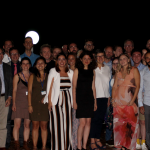Institute of Geophysics Polish Academy of Sciences
Partner Description
Institute of Geophysics Polish Academy of Sciences conducts geophysical research, from the atmosphere across the hydrosphere to the lithosphere. The research concerns: seismology, physics of the Earth’s interior, geomagnetism, physics of atmosphere, hydrology and polar research. The Institute is a leader of studies in the field of seismic processes induced by technological activities. Specifically, the anthropogenic seismicity research group from the Institute has been developing and implementing methodologies of the assessment of probabilistic anthropogenic seismic hazard and carries on the hazard analyses for special structures of key importance for the economy and the environment. IGPAS participates in the creation of global databases based on the monitoring of geophysical fields in Poland and at the Polish Polar Station on Spitsbergen. Laboratory of Atmospheric Ozone continues monitoring of the ozone layer and atmospheric pollutants since 1963 and is in possession of the longest ozone content time series in Europe. IGPAS is deeply involved in European Plate Observing System program, leading the EPOS Working Group: “Infrastructure for Georesources”, which aims to integrate European infrastructure for research into anthropogenic seismicity. IGPAS designed and built IS-EPOS, an e-platform for research into anthropogenic seismicity, which is presently being developed as a common undertaking of 14 institutions from 9 European countries in the framework of EPOS IP European project. The platform comprises innovative solutions that support processing and exchange of multidisciplinary data on the area of anthropogenic seismicity and other anthropogenic hazards, as well as facilitate collaborative activities.
Role in the Project
Tracking fluid pathways within the rockmass. Seismic events are parameterized by basic source parameters, derived parameters and environmental, industrial and any other correctly defined parameters. These parameters’ sets, transformed to equivalent dimensions, are used to identify clusters defined by specific conditions on generating pathways for fluid migration in the rockmass. The dependence of such clusters characteristics on technological parameters is also investigated.
S4CE database on IS-EPOS platform. The platform and its slave data-node will be used as a storage of new data acquired during S4CE project. IG PAS will arrange data formatting and upload to the platform, will standardise and harmonize the project database and will provide continuous virtual access to this database and other IS-EPOS platform resources and functionalities.

Contact
Email:
Web: www.igf.edu.pl
Team

Professor Dr. Stanislaw Lasocki – Full Professor, Head of Department of Seismology in IGPAS
Main research interest: application of statistical methods to analyzing natural and anthropogenic seismicity, to assessing time dependent seismic hazard due to anthropogenic seismicity and to hazard management. Author or co-author of some 130 research papers, project leader or advisor in various expertizes on anthropogenic seismicity for industry and public administration. Chairing the TAIS Working Group of the International Association of Seismology and Physics of the Earth Interior (IASPEI).

Dr Konstantinos Leptokaropoulos – Assistant Professor in IG PAS
Main research interest: various kinds of both natural and anthropogenic seismological research such as seismicity catalogues elaboration, seismicity rate changes, time series analysis and statistical seismology. In addition he has been developing algorithms and software for various seismological research applications.

Dr Grzegorz Lizurek – Assistant Professor in IG PAS
Main research interest: induced seismicity and seismic hazard of the Central Europe. The main scientific field is seismic source studies, especially the focal mechanism estimation and interpretation. Within several research project his responsibility was metadata preparation and its compatibility with EPOS standards, seismological support of the dissemination project results.




